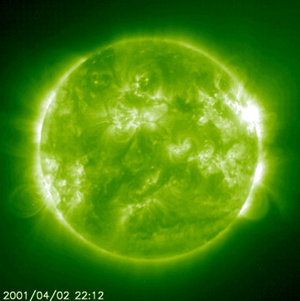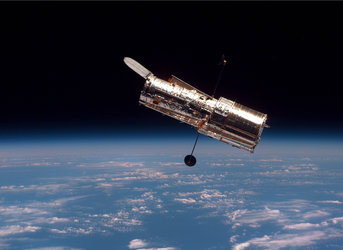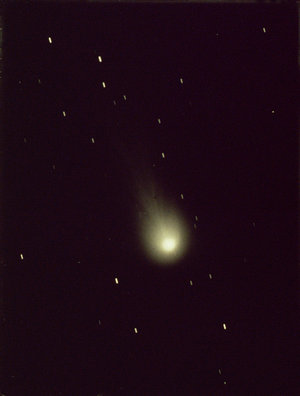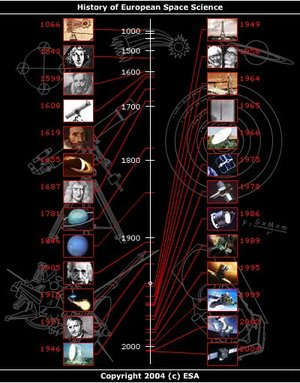5 April
2002: On 5 April 2002, scientists announced that asteroids in our Solar System might be more numerous than previously thought.
This finding was according to the first systematic search for these objects performed in the infrared, with ESA's Infrared Space Observatory, ISO.
The ISO Deep Asteroid Search indicates that there are between 1.1 million and 1.9 million 'space rocks' larger than one kilometre in diameter in the so-called 'main asteroid belt', about twice as many as previously believed.
Despite being in our own Solar System, asteroids can be more difficult to study than very distant galaxies. With sizes of up to one thousand kilometres in diameter, the brightness of these rocky objects may vary considerably in just a few minutes. The ISO Deep Asteroid Search (IDAS), the first systematic search for these objects performed in infrared light, focused on main-belt asteroids. Because it is impossible to simply point the telescope at the whole main belt and count, astronomers choose selected regions of the belt and then use a theoretical model to extrapolate the data to the whole belt.
Edward Tedesco and François-Xavier Desert observed their main belt selected areas in 1996 and 1997 with ESA's ISO. They found that in the middle region of the belt the density of asteroids was 160 asteroids larger than one kilometre per square degree - an area of the sky corresponding to that covered by four full moons as seen from Earth. Then, a model developed by Tedesco and the astronomers Alberto Cellino and Vincenzo Zappala allowed them to estimate the whole asteroid population in the main belt: between 1.1 million and 1.9 million asteroids with a diameter larger than 1 kilometre.
ESA's infrared space telescope, ISO, operated from November 1995 until May 1998. As an unprecedented observatory for infrared astronomy ISO made nearly 30 000 scientific observations.
1973: On 5 April 1973, NASA launched Pioneer 11. It followed its sister ship, Pioneer 10, to Jupiter in 1974. It made the first direct observations of Saturn in 1979 and studied energetic particles in the outer heliosphere.
The Pioneer 11 mission ended on 30 September 1995, when the last transmission from the spacecraft was received. There have been no communications with Pioneer 11 since. The Earth's motion has carried it out of the view of the spacecraft antenna. The spacecraft cannot be manoeuvred to point back at the Earth. It is not known whether the spacecraft is still transmitting a signal. No further tracks of Pioneer 11 are scheduled. The spacecraft is headed toward the constellation of Aquila (The Eagle), north west of the constellation of Sagittarius.
Pioneer 11 will pass near one of the stars in the constellation in about four million years.











